How to cook wild boar stew.
A rich and hearty dish, fragrant and intensely flavored. Perfect for the fall-winter season and highly appreciated by those who love game meat.
It requires some time both for preparation and cooking, but believe me, all the work and time will be well worth it.
With this recipe, we will eliminate the gamey taste with a special marinade.
You can also cook the Nebrodi black pig this way.
You might also be interested in:

- Cost: Medium
- Rest time: 8 Hours
- Preparation time: 10 Minutes
- Portions: 4
- Cooking methods: Slow cooking
- Cuisine: Italian
- Seasonality: Fall, Winter
- Energy 533.46 (Kcal)
- Carbohydrates 12.55 (g) of which sugars 6.97 (g)
- Proteins 56.03 (g)
- Fat 27.57 (g) of which saturated 5.91 (g)of which unsaturated 7.82 (g)
- Fibers 5.20 (g)
- Sodium 445.88 (mg)
Indicative values for a portion of 400 g processed in an automated way starting from the nutritional information available on the CREA* and FoodData Central** databases. It is not food and / or nutritional advice.
* CREATES Food and Nutrition Research Center: https://www.crea.gov.it/alimenti-e-nutrizione https://www.alimentinutrizione.it ** U.S. Department of Agriculture, Agricultural Research Service. FoodData Central, 2019. https://fdc.nal.usda.gov
Ingredients
Let’s go shopping
- 2.2 lbs wild boar (preferably leg)
- 2 carrots
- 2 stalks celery
- 2 onions
- 4 leaves sage
- 2 sprigs rosemary
- 4 cloves
- 4 juniper berries
- 4 leaves bay
- 2 cloves garlic
- to taste chili pepper
- to taste nutmeg
- to taste ground cinnamon
- 25 oz red wine
- 4 tbsps extra virgin olive oil
- 24.7 oz peeled tomatoes (or half purée and half chunks)
- to taste salt
- to taste pepper
- to taste fennel seeds
a look at health
Tools
what we need for
- 1 Bowl
- 1 Knife
- 1 Cutting board
- 1 Colander
- 1 Pot
Steps
Preparation
Wash the wild boar meat with red wine, never with water.
The marination will take about 8 hours, purging the meat so that it discards the liquids that give the gamey smell.
This is usually done with large animals, not small ones, but it’s best not to risk it.
Importantly, do not take male specimens during the mating season, as the meat smells of urine despite good marination.Cut the meat into pieces about 1 inch long, then place it in a bowl. Peel and chop 1 carrot, 1 celery stalk, 1 medium onion and add them to the bowl. Also add the herbs: 1 sprig of rosemary, a few sage leaves, 4 cloves, 2 bay leaves, 4 juniper berries, and a few peppercorns.
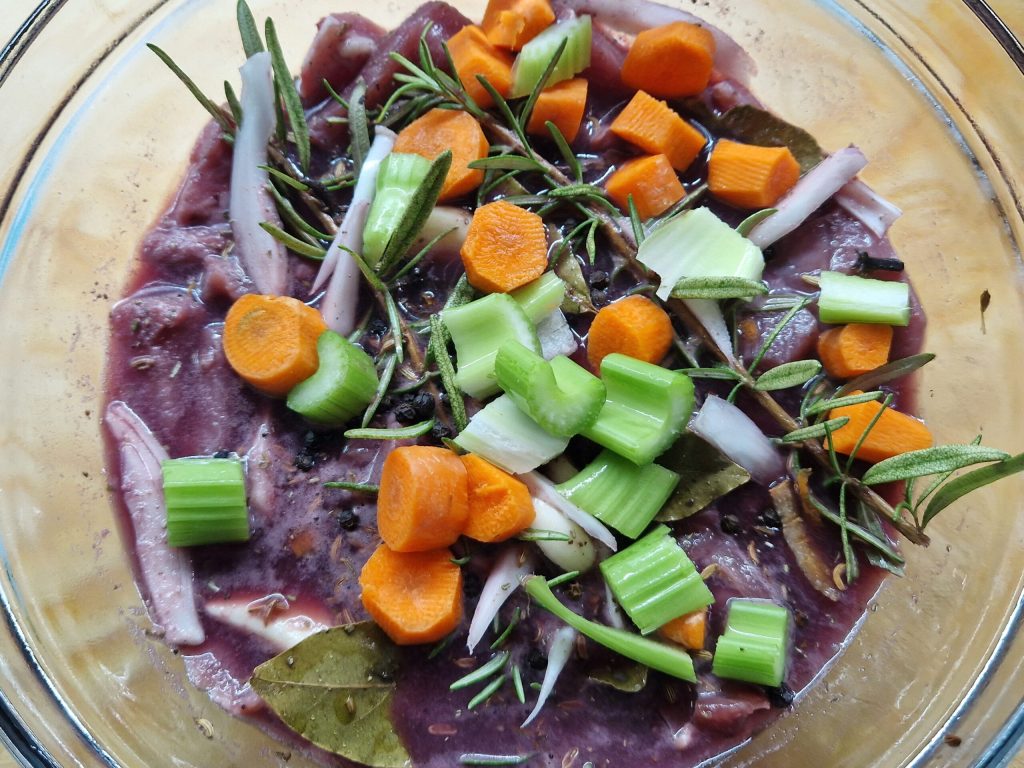
Cover the meat with a good red wine; being Sicilian, I used Nero d’Avola, but you can use whatever you have, as long as it’s red and of good quality.
Mix the meat and herbs well, then cover with a lid and marinate in the fridge for about 8 hours, usually from evening to morning.After marinating, drain the meat, herbs, and wine in a colander. Take a container large enough to hold all the meat and place all the pieces of meat in it one by one, discarding the herbs, leaving the meat pieces as they are without washing them.
Discard everything else.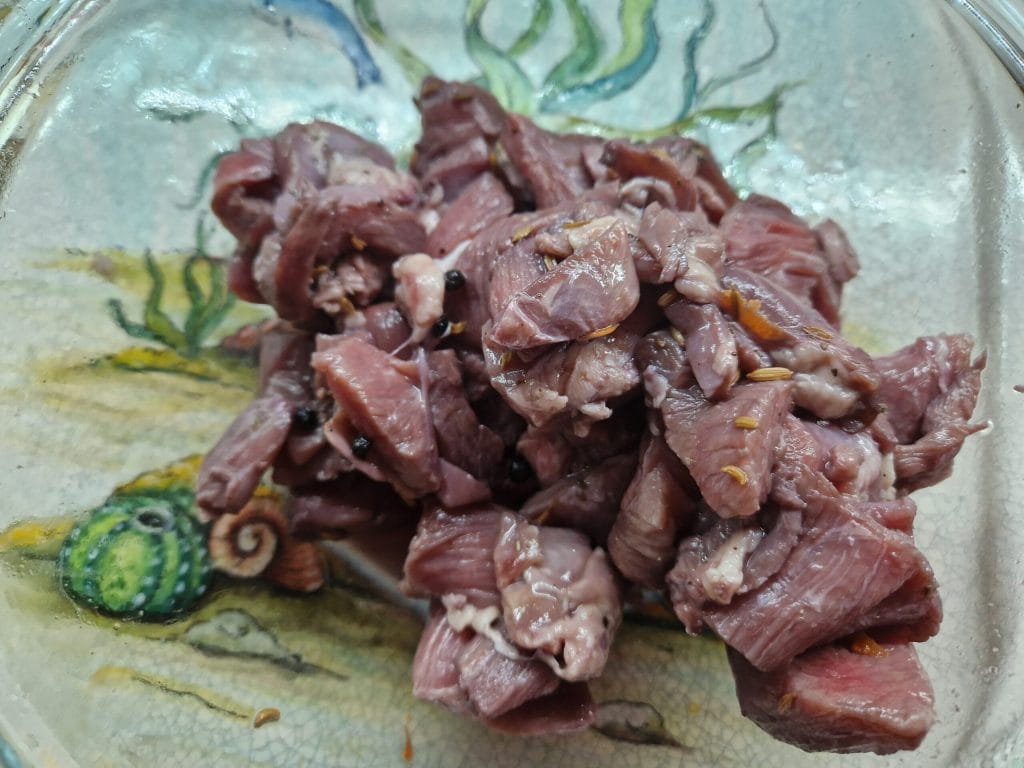
Chop: 1 onion, 1 carrot, 1 celery stalk, and 2 cloves of garlic

Place them in a pan with 4 tablespoons of oil and let them sauté for 3 minutes.
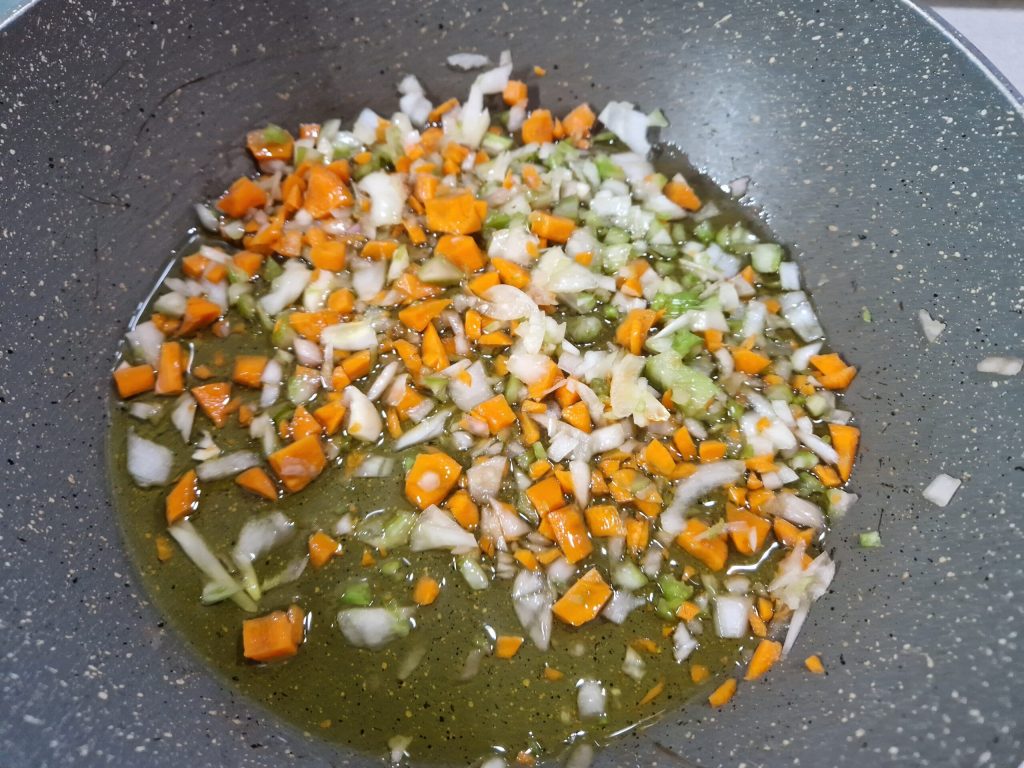
Add, without chopping, 1 sprig of rosemary, a few sage leaves, and 2 bay leaves, along with the meat, and let it brown for 20 minutes.

Stir well, pour in a glass of red wine, and let it evaporate.
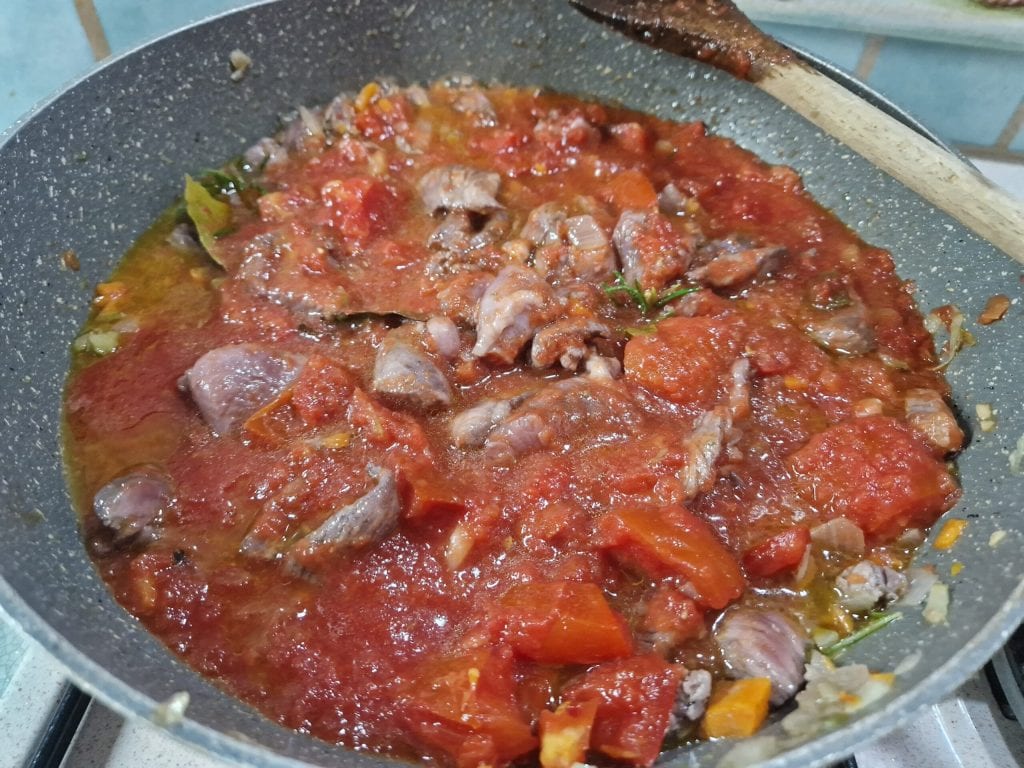
Add 24.7 oz of tomato pulp or purée. I added a bit of purée and some of my home-canned chunks home-canned tomato preserves.
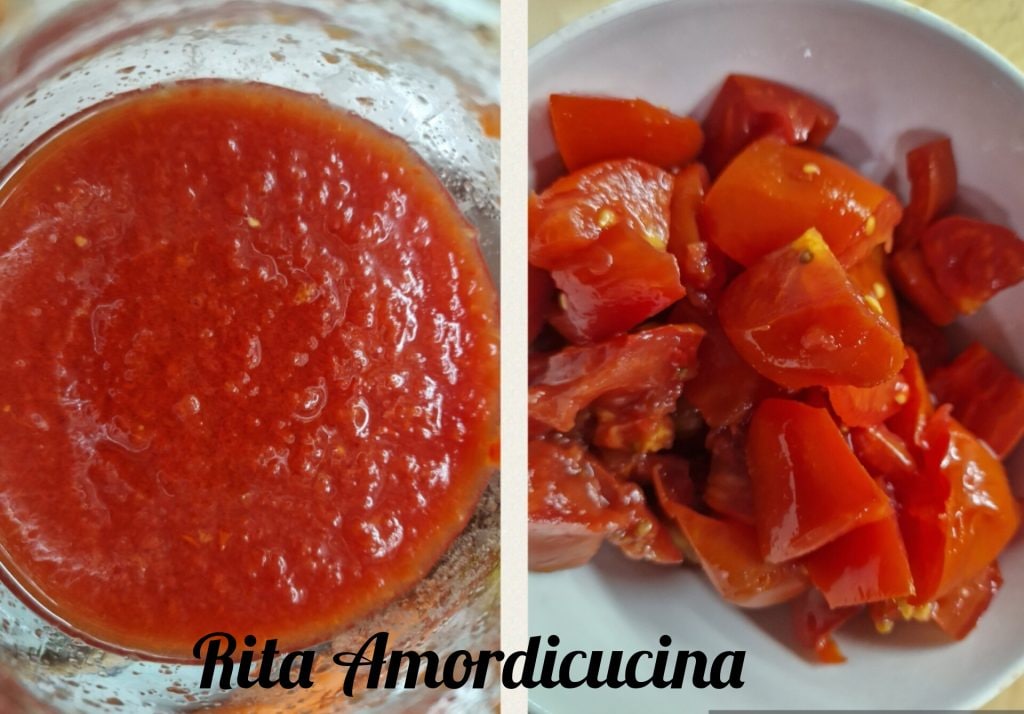
Cover with broth or hot water and begin cooking with the lid almost fully on.
Cook for 3 to 4 hours over low heat. The cooking time will depend on the age of the animal and the cut of meat, until the meat is very tender.About every half hour, gently stir and add more hot water or broth as needed. The meat should always be covered with liquid and the pan almost fully covered.
After a couple of hours of cooking, adjust the salt and add some chili pepper. As the meat cooks it becomes more tender, and you should stir it more gently to avoid it crumbling like the Genovese.
Just before turning off the heat, add a bit of nutmeg and a pinch of ground cinnamon, adjust the salt and pepper, and serve the wild boar stew.
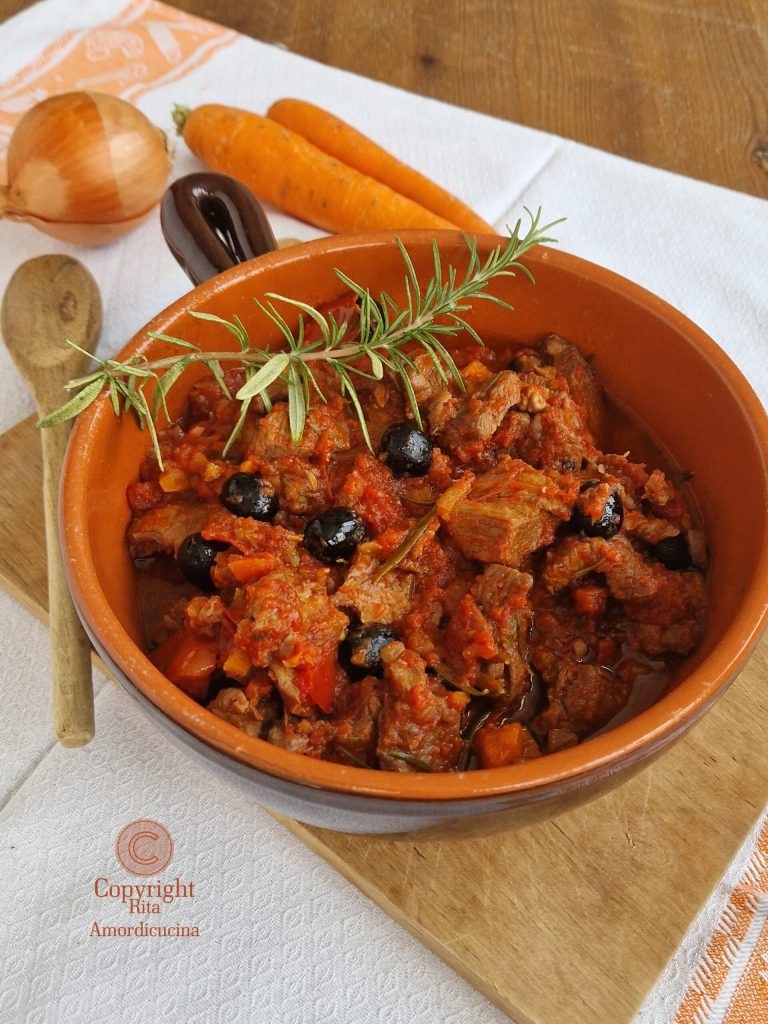
At this point, if you want to dress pasta, I suggest removing the pieces of meat from the pan and reducing the cooking juices, keeping the pan uncovered until it’s thick enough but still abundant to dress the pappardelle, crostini, or polenta, and accompany the meat, which should never be dry.
Once the wild boar stew is cooked, you can finely chop a bit of meat with a knife to dress
the egg and hand-made pasta.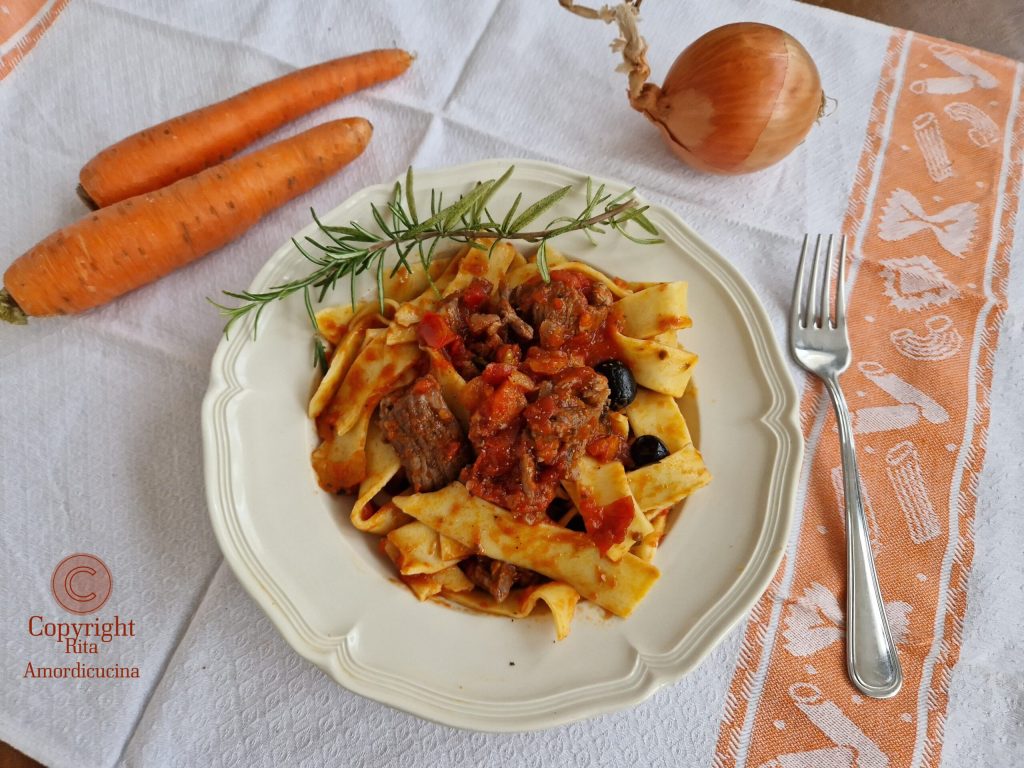
Here is a nice plate of polenta with wild boar stew, what can I say…. all that remains is to wish you Bon appétit,

Storage
How to cook wild boar stew
The dish keeps in the refrigerator for 3 days in a closed container, or in the freezer for up to 3 months.
FAQ (Questions and Answers)
How to cook wild boar stew
Besides pasta, polenta, or crostini, what else can I serve the dish with?
With boiled potatoes, rice, or as a filling for ravioli, here’s how I make recycled ravioli.

